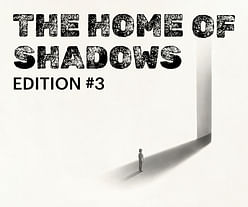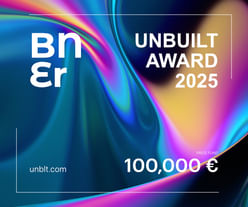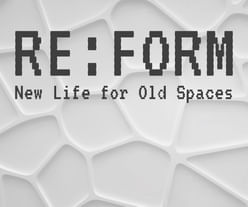
The final results of the Rethink: 2025 international design competition are in. After announcing a longlist and shortlist of hopeful entries earlier this month, RIBA's call for design solutions in a post-pandemic world finally revealed the three joint winners this morning.
The challenge asked architects and students to imagine what life and our built environment might look like in 2025 focusing on one or
several of these areas: healthcare spaces, remote learning, high-density
living, public transport, high streets vs online shopping,
international travel, and the use of technology to monitor and control
populations.
"It’s clear that many of the impacts of COVID-19 will be long-lasting and will continue to shape how we live for years to come," said RIBA Presiden Alan Jones in response to the selected projects. "These winning proposals demonstrate the crucial role that architects can and must have in delivering places and spaces for communities of the future."
The victorious teams in the three categories Building, Streets, and City will get to share the total prize fund of £8,000, about US$10,300.
Learn more about the proposals and watch the designers talk about their ideas in the video interviews below.
BUILDING
Get Everyone In by Benjamin Holland, Olivia Dolan, Katie Williams

"This proposal draws on two issues which have been amplified by the pandemic – the need to house people who are homeless and the prediction that many office spaces will become permanently redundant. Bringing these issues together, it suggests that empty office spaces can be re-used and repurposed to house homeless people. The proposed reworking of an office tower sees communal health facilities on ground level and brings nature into the space with sky gardens at the mid-level – as well as offering an opportunity for residents to grow their own food in vertical gardens. On the upper floor, drawings show how the deep plan office floor could be used for hostel-style bedrooms around the perimeter with communal spaces in the centre of the floor. There is also a floor left for some office workers."
STREETS
Streets are Made for Walking by People Matter.

"This proposal uses Holloway Road, an arterial road in North London – as an example of what could be done in any city to redesign its streets to make high quality public space for those living either side of such traffic corridors. In light of changes to how we use streets due to the pandemic - the entry is hopeful for a permanent move towards cleaner, more physically active methods of transport. This proposal offers a two-stage programme for capitalising on these changes, and accelerating a transition towards cleaner, greener, safer and happier streets. The first stage will be to ensure that the temporary changes to the streets are made permanent by 2025 and that by 2035 these more liveable and breathable neighbourhoods will be linked in a series of lateral rings. The idea is that the radial roads out from the centre diminish in importance as the centre itself does, and the lateral connections increase in importance. With reduced amounts of commuting into the centres of cities now envisaged, this realignment becomes feasible and desirable.
CITY
Greater London Agriculture by Tim Rodber and Dominic Walker

"This proposal seeks to transform London’s metropolitan area into an ecologically diverse, agricultural landscape, addressing the premise that industrialised food production has made us vulnerable to diseases transmitted from animals to humans. The project proposes to introduce agroecology (sustainable farming that works with nature) to London by embedding growing spaces within and around the city, introducing funding for agroecological education that will allow trailblazing farmers to learn the skills necessary to flourish and pass on knowledge. Initially a patchwork of productive landscapes, over time these growing spaces will become connected by bio-diverse corridors, with wildflowers for pollinators and edible plants for foraging. Along the Thames, a diverse range of activities will become part of this edible landscape, from the wetlands of Rainham Marshes for cattle grazing, orchards producing cider to experimental seaweed farms floating in the estuary. Circular economy entrepreneurs will work to improve logistics, closely matching food volume to demand, creating valuable innovative bioeconomy products that embrace interesting seasonal food. Organic by-products will return to the soil and the virtuous cycle will continue."
The competition was decided by jurors Francine Houben (Creative
Director, Founding Partner at Mecanoo); Matt Jones (Principal Designer
at Google AI, RIBA Trustee); Sarah Castle (Director, Co-Founder at
IF_DO); Ed Clark (Director of Structural Engineering at Arup); Asif Khan
(founder, Asif Khan); Joanne Averley (London Mayor Design Advocate,
incoming Chief Planner at MHCLG); and jury chair Hugh Pearman (RIBA
Journal Editor).

The Home of Shadows / Edition #3
Register by Wed, Jan 29, 2025
Submit by Mon, Mar 3, 2025

100,000 € Prize / Buildner's Unbuilt Award 2025
Register by Thu, Oct 30, 2025
Submit by Thu, Nov 20, 2025

Land Art Generator Initiative 2025 Fiji: Climate Resilience for Island Communities
Register/Submit by Mon, May 5, 2025

Re:Form – New Life for Old Spaces
Register by Wed, Jan 22, 2025
Submit by Tue, Sep 2, 2025
No Comments